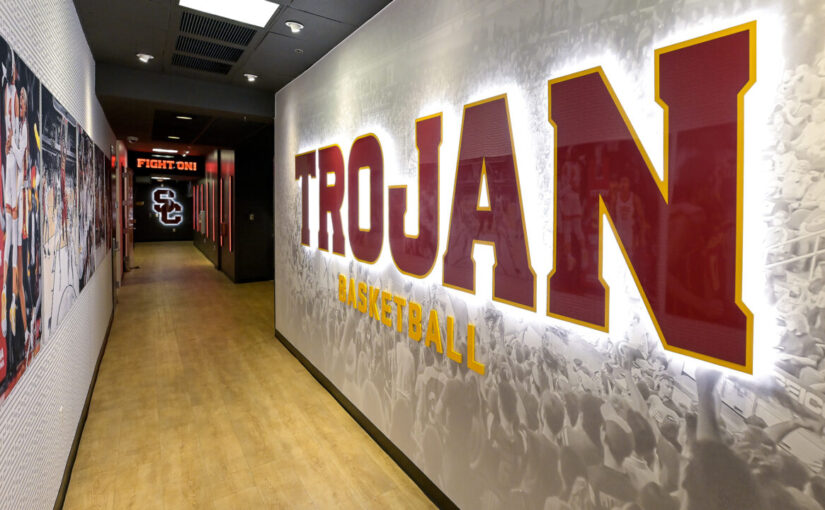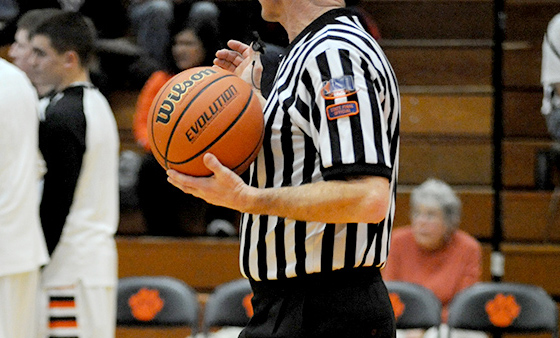Coach&AD’s 2021 Coaches Survey
Referee shortages, the safety of players, staff, and personnel, and social media issues are just a few of the hot-button issues highlighted in our fourth annual Coaches Survey.
Back in 2018, Coach & Athletic Director issued a survey to high school coaches to gather feedback on some of the major issues in the profession across the country. The survey results help us better understand the challenges faced by coaches, and they guide us in providing relevant content to confront those issues head-on.
The 2021 Coaches Survey examined the ripple effects of COVID-19, the prevalence of athletic trainers in high school sports, whether to allow home-schooled students to compete in public school athletics. We also asked coaches what they learned most about their team or profession in the last year and to what extent COVID-19 has affected the financial bottom line for coaches.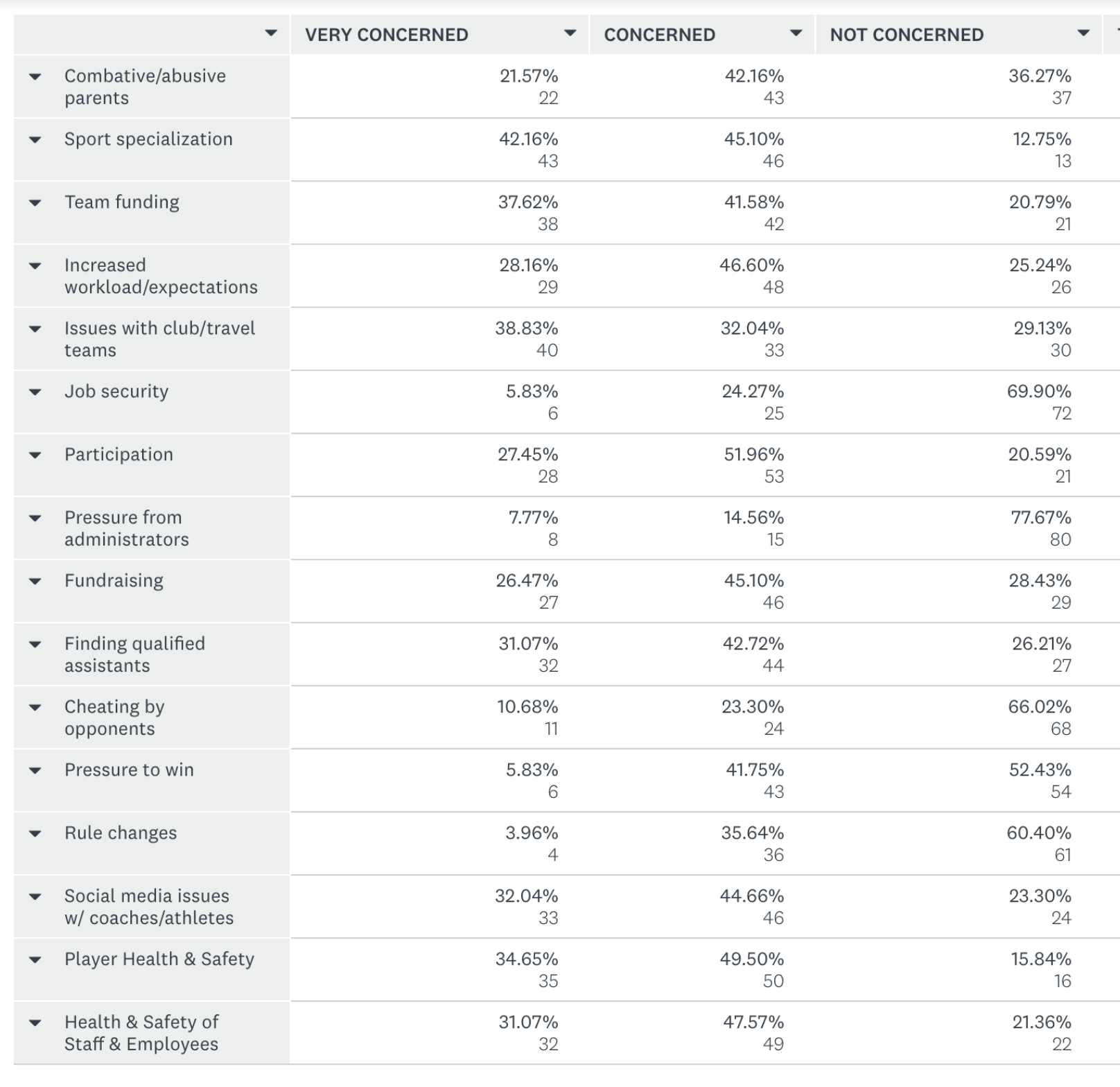 As part of our annual survey, we also asked coaches to rank what they believe are the most significant challenges facing them today. And for the fourth-straight year, coaches polled believe sports specialization among student-athletes brought them the most concern, garnering 87% of the response. Two new options to the question, player health and safety, and the health and safety of staff — two COVID-related topics — entered the poll as the second (85%) and fourth-most (79%) concerning issue, respectively.
As part of our annual survey, we also asked coaches to rank what they believe are the most significant challenges facing them today. And for the fourth-straight year, coaches polled believe sports specialization among student-athletes brought them the most concern, garnering 87% of the response. Two new options to the question, player health and safety, and the health and safety of staff — two COVID-related topics — entered the poll as the second (85%) and fourth-most (79%) concerning issue, respectively.
Here are five takeaways from the 2021 Coach & Athletic Director Coaches Survey.
COVID CONCERNS
There’s no denying the effect the COVID-19 pandemic has had — and, in some cases, continues to have — on athletics across the country in the last year-plus. In such an unusual year, we asked coaches some COVID-related questions to ascertain how the profession has been affected and reacted to the pandemic.
 As you might expect, 94% of respondents said they were at least somewhat affected by the pandemic, with 58% saying their sport was “drastically affected” by the pandemic. More than losing out on the games, practices, championship memories, and agonies of anguish, teams’ financial standings were also hit hard by COVID. A little more than half of the respondents (52%) noted that their athletic spending budget had been delayed to some point or another. Some had shared their budget had been delayed by as little as six to nine months with others sharing as much as a two-year delay in spending. Most, however, detailed at least a year of suspended spending with an unknown date of return.
As you might expect, 94% of respondents said they were at least somewhat affected by the pandemic, with 58% saying their sport was “drastically affected” by the pandemic. More than losing out on the games, practices, championship memories, and agonies of anguish, teams’ financial standings were also hit hard by COVID. A little more than half of the respondents (52%) noted that their athletic spending budget had been delayed to some point or another. Some had shared their budget had been delayed by as little as six to nine months with others sharing as much as a two-year delay in spending. Most, however, detailed at least a year of suspended spending with an unknown date of return.
Despite the hold on funds and pause of sports, coaches were able to reflect on their profession. We asked them to share what they learned most about their profession in the last year. Below is a sampling of those anonymous responses.
“The time together has been enjoyable and the time away made me more empathetic,” one coach said, with another adding, “we are resilient.”
“I learned that clear communication is essential,” one coach shared.
“Athletes can and will work on their own if you communicate well with them, provide detailed workouts and rationales for those workouts, and let them know you believe in them and appreciate their efforts,” another coach added.
“That athletics is the only place providing stability for many, many kids. School is trying, but it has been very hard for them. Athletics offers them a little more, so the contact and connection are better this year,” one coach said.
“Being flexible and adaptable is a real skill. Working with so many coaches with varying degrees of flexibility has been a challenge. I’ve had to find new and better ways to communicate instead of relying on seeing or meeting with people,” another finally wrote.
OFFICIALLY A PROBLEM
It’s long been said that the best type of referee is the one spectators never notice. But what happens referees aren’t there to even go unnoticed?
As state high school athletic organizations and youth sports groups nationwide are battling shortages of officials, the COVID pandemic certainly didn’t help the matter. The most answered responses were very similar to last year’s coaches report, with many offering similar reasons: lack of interest by young people, problematic or abusive parents, and lack of proper compensation among others.
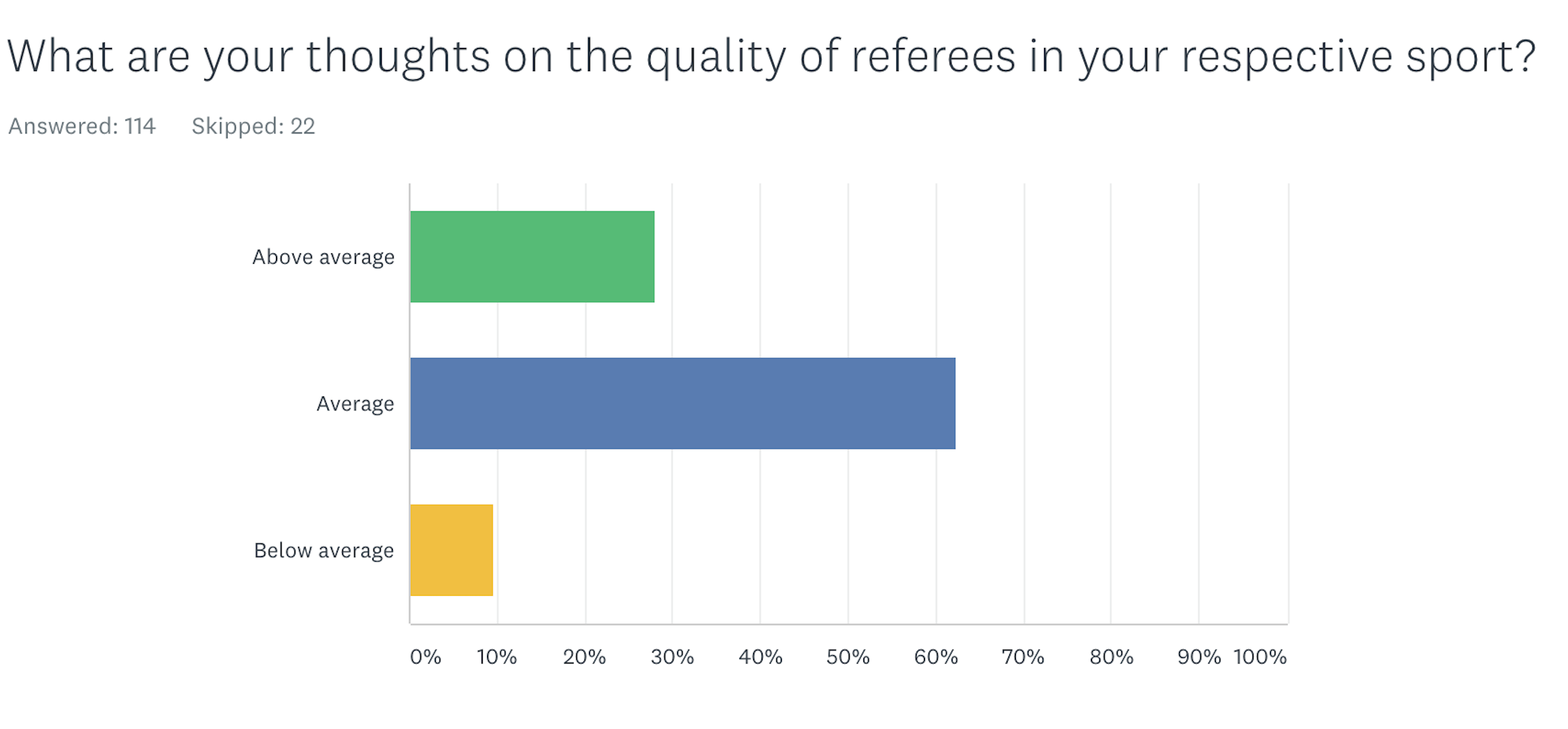 As for the ways in which the problem can be addressed, the response from coaches varied.
As for the ways in which the problem can be addressed, the response from coaches varied.
“I coach one sport and officiate another. We need to recruit people like that. Also, improve mentoring programs to help novices,” one coach opined.
Recruitment was a word that came up quite often in coaches’ responses.
“As an executive board member of the Illinois Wrestling Coaches and Officials Association, we actively recruit and scholarship new referees. We provide training and mentors as well. Provide more professional training for referees/ officials,” another coach shared. “Increasing pay usually means paying more money to unqualified/less experienced referees.”
While scholarships for young recruits to pay for training and mentorship are a step in the right direction, another coach took that idea a step further.
“I believe there needs to be an incentive program for varsity level athletes that are not going on to play in college to begin refereeing! Similar to a caddy scholarship. Directly after each high school season, we could offer free training to those seniors that just finished their sport (multi-sport athletes would be a challenge). After training, they could apply for a scholarship for books/college expenses with the required 10-20 games or something similar to earn that scholarship. Obviously, there would be attrition, but you might get high-level varsity athletes to buy right into officiating during their college experience, keep them connected to the game and they’d have the confidence to come back to it later in life!”
Though promising and innovative suggestions, these ideas have been brought up in the past and the problem still exists, leaving some coaches a little less optimistic.
“I wish I knew.”
HOMESCHOOLERS ON THE HOME TEAM
This topic where perhaps the biggest change was seen, as there was a 10% increase for those in favor of allowing home-schooled students to compete with their public school counterparts. Again, with the effects of COVID-19 pushing so many schools to digital or virtual learning environments, many are beginning to see that ideas of teamwork, trust, commitment, leadership, and communication can all occur without team members being in the same building all day long.
“We have many students learning remotely. They can play on athletic teams,” one coach shared.
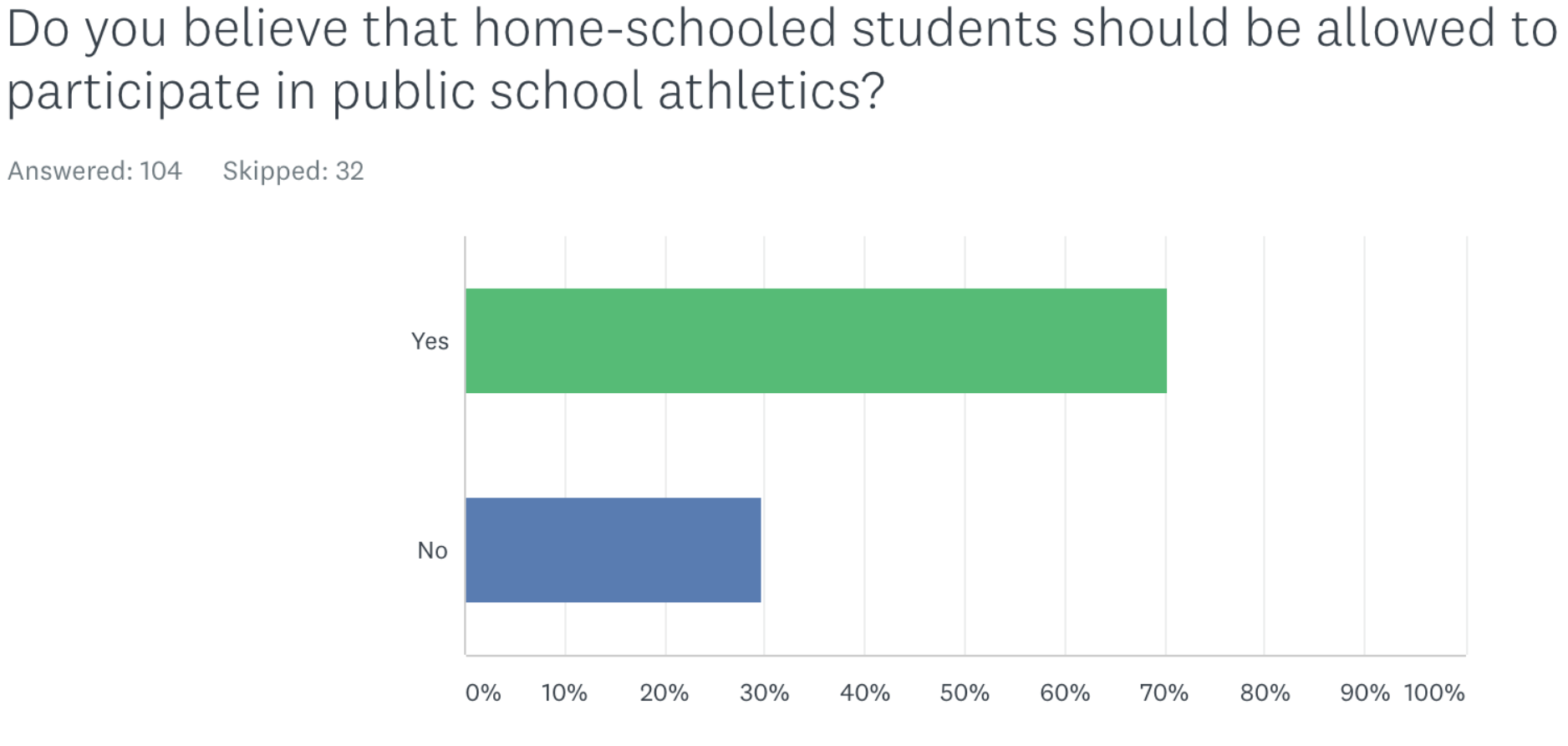 “Especially during these pandemic times,” another coach chimed in. “There is always the possibility of losing good student-athletes to another school if we don’t allow home-schooled students in.”
“Especially during these pandemic times,” another coach chimed in. “There is always the possibility of losing good student-athletes to another school if we don’t allow home-schooled students in.”
Another added, “Not every homeschool student has suitable programs available to participate in sports and the parents do pay the same taxes.”
Seventy percent of those who took the survey said schools should allow home-school students to participate in public school athletics, 10 percentage points higher than last year, which saw a virtual 60/40 split on the issue.
Despite that, however, there still are coaches who believe that if homeschooled students want the extracurricular activities that come with public schooling, they should be following the same guidelines as everyone else.
“High school athletics is not a right, but a privilege. You have to earn it like everyone else,” one coach said.
“I have mixed feelings about this. As long as they are mandated to do what is required, pay the fees, etc. I am OK with it,” another coach wrote.
TRAINER-ORIENTED
The benefits of having an athletic trainer on the staff full-time are undeniable. It is never a matter of whether to hire a full-time trainer or not. It is almost always a matter of budgetary resources.
Fifty-three percent of those polled said they have a full-time athletic trainer at their respective school. Nearly a third of those in the survey said they have some sort of part-time trainer available for games and practices. Ninety-two percent said they feel confident that their student-athletes can receive immediate, adequate care following an injury, a five percent increase in the last year.
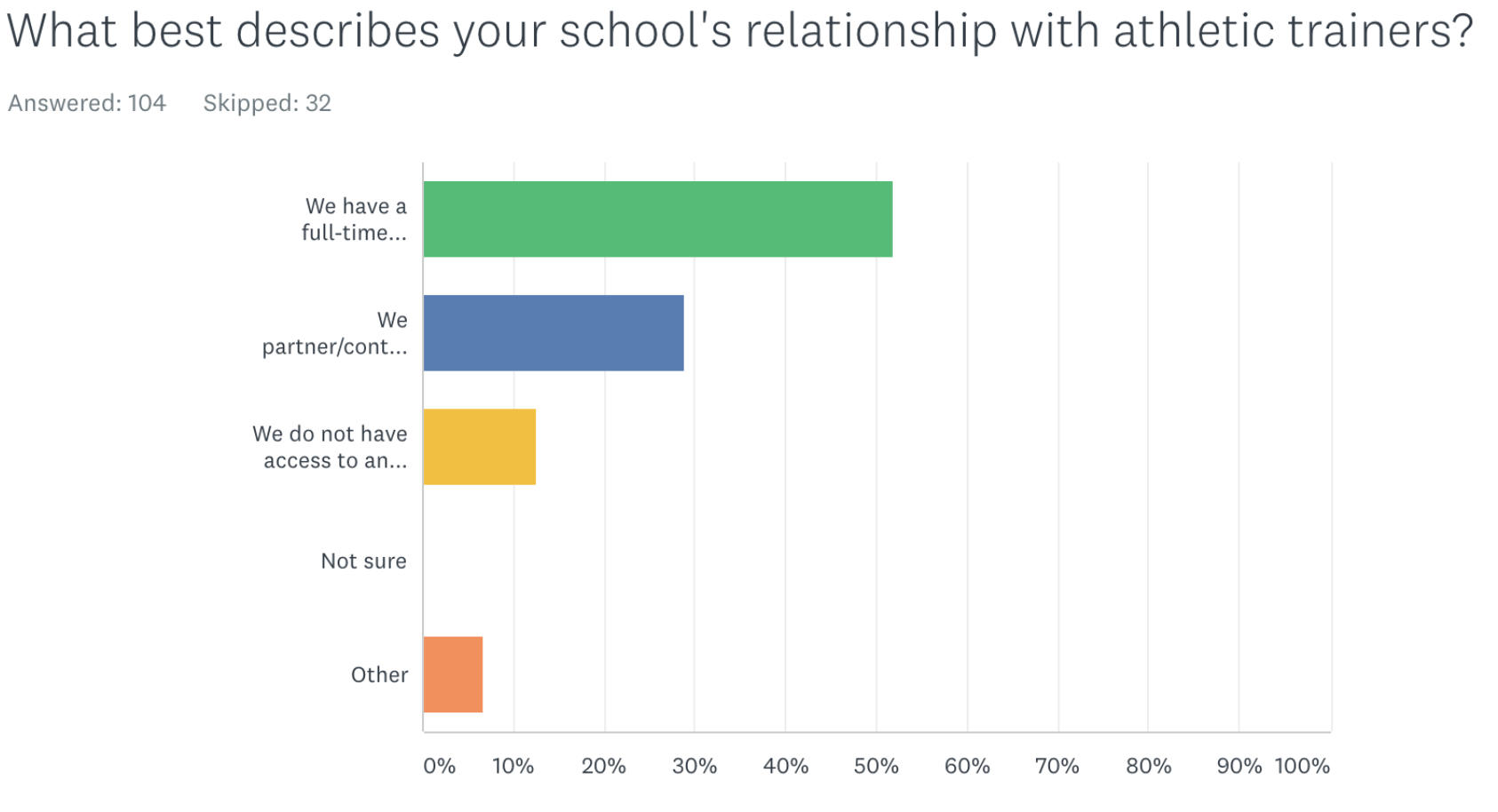 The increase could be looked at in two way: 1) with fewer games being played there were fewer opportunities for injuries to occur and fewer games means few opportunities for athletic trainers to be spread thin or 2) with athletic trainers have stepped more in the spotlight over the last year, taking on bigger leadership roles to ensure the health and safety of student-athletes and staff.
The increase could be looked at in two way: 1) with fewer games being played there were fewer opportunities for injuries to occur and fewer games means few opportunities for athletic trainers to be spread thin or 2) with athletic trainers have stepped more in the spotlight over the last year, taking on bigger leadership roles to ensure the health and safety of student-athletes and staff.
“We have a high-level trainer that I go to first with my own personal injuries before I see a doctor,” one coach shared.
» ALSO SEE: Top Equipment to Protect Your Players
Another added, “We have an award-winning trainer who everyone trusts,” echoing statements from another coach who said their trainer “does an excellent job with communicating and treating” their athletes.
Despite the heightened awareness, there are still nearly 13% of respondents who answered that they do not have access to an athletic trainer.
“I have been trained in first aid and CPR and do my best to keep certified. But I’m it until the paramedics arrive,” an anonymous coach shared.
Another coach admitted that he couldn’t always “say immediate, because they are only at the school a couple of days of the week.”

